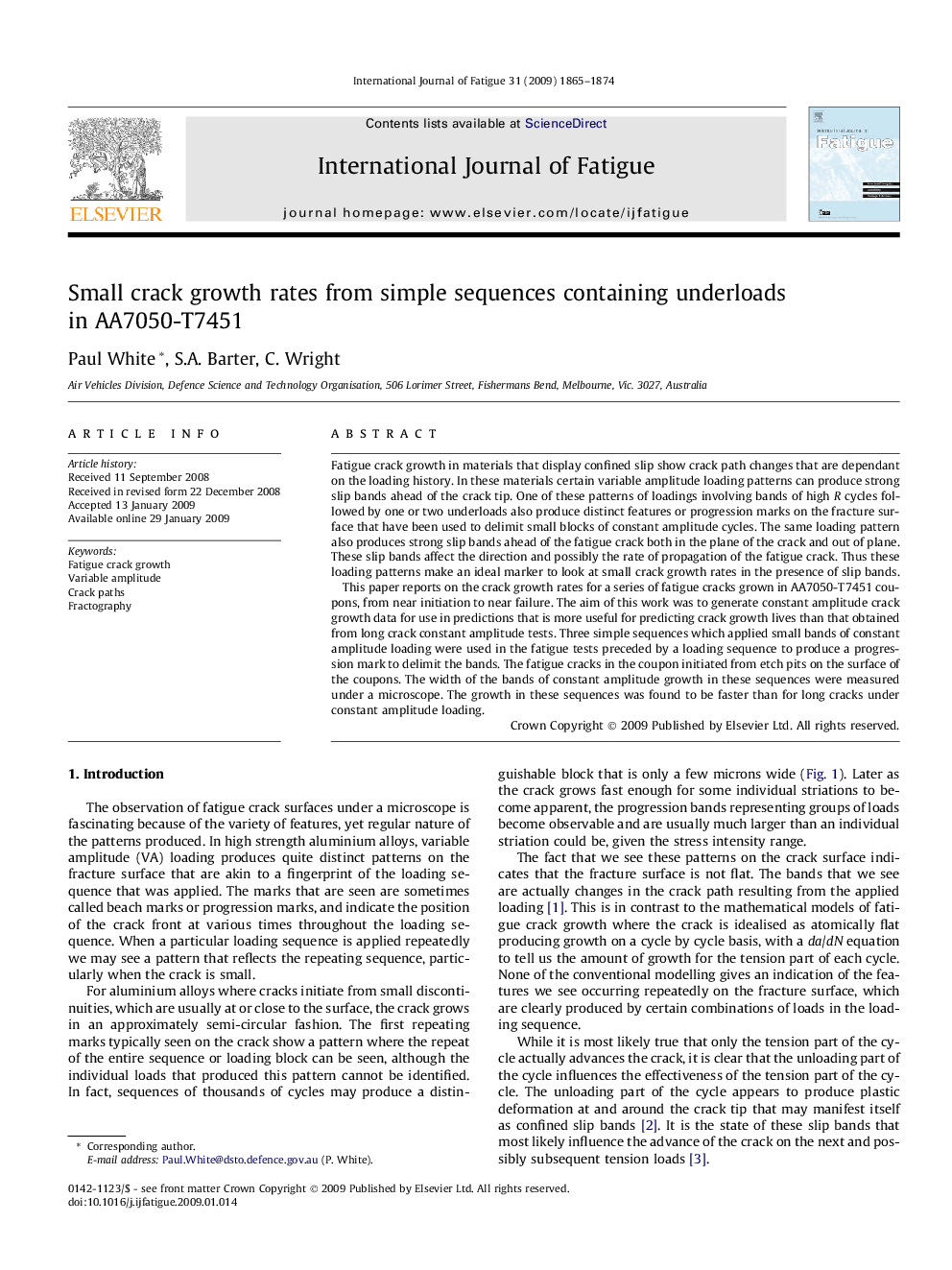| Article ID | Journal | Published Year | Pages | File Type |
|---|---|---|---|---|
| 775661 | International Journal of Fatigue | 2009 | 10 Pages |
Fatigue crack growth in materials that display confined slip show crack path changes that are dependant on the loading history. In these materials certain variable amplitude loading patterns can produce strong slip bands ahead of the crack tip. One of these patterns of loadings involving bands of high R cycles followed by one or two underloads also produce distinct features or progression marks on the fracture surface that have been used to delimit small blocks of constant amplitude cycles. The same loading pattern also produces strong slip bands ahead of the fatigue crack both in the plane of the crack and out of plane. These slip bands affect the direction and possibly the rate of propagation of the fatigue crack. Thus these loading patterns make an ideal marker to look at small crack growth rates in the presence of slip bands.This paper reports on the crack growth rates for a series of fatigue cracks grown in AA7050-T7451 coupons, from near initiation to near failure. The aim of this work was to generate constant amplitude crack growth data for use in predictions that is more useful for predicting crack growth lives than that obtained from long crack constant amplitude tests. Three simple sequences which applied small bands of constant amplitude loading were used in the fatigue tests preceded by a loading sequence to produce a progression mark to delimit the bands. The fatigue cracks in the coupon initiated from etch pits on the surface of the coupons. The width of the bands of constant amplitude growth in these sequences were measured under a microscope. The growth in these sequences was found to be faster than for long cracks under constant amplitude loading.
